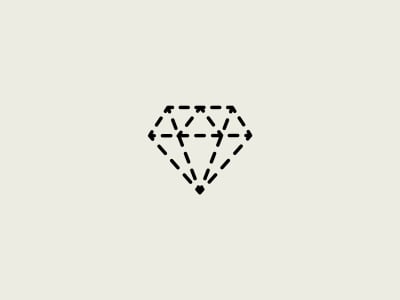In the diamond industry, rarity equates to value, particularly with color. Generally, colorless diamonds are the most valuable due to their lack of color. Conversely, for colored diamonds, value rises with color intensity, with rare hues like saturated pinks, blues, and greens being especially valuable. Even slight color variations greatly affect value.
Describing color is a very difficult due to the differing perceptions we each have and the incredible subtleties that the human eye can perceive. This means that not only are systems describing the color of a diamond are hugely important, but they need to be based on a recognized standard for them to work for everyone in the industry, including the customer across the counter in a jewelry store.
Historically, jewelry professionals once described color using terms based on a diamond’s origins. Near-colorless diamonds were termed “Golconda” after the Indian mining area. Later, “river” described colorless diamonds that were from alluvial sources like Brazil. Once the Kimberley deposits came online, yellow-tinted diamonds were labeled “cape,” after the Cape of Good Hope, a term which endures to this day to simply indicate a yellow diamond.
The most refined version of this system is still in use in parts of Europe and we can probably make reasonable-but-not-exact comparison’s to the much-preferred GIA system.
River
Top Wesselton
Wesselton
Top Crystal
Crystal
Top Cape
Cape
Low Cape
Light Yellow
Yellow
The scale begins with ‘River’ refering to the most perfect, or colorless, color diamonds (GIA ‘D’ and ‘E’). ‘Top Wesselton’ is also known as a rare white - (GIA ‘F’ and ‘G’). ‘Wesselton’ is also still white (GIA ‘H’). ‘Top Crystal is roughly GIA’s ‘I’ color grade with ‘Crystal’ and ‘Top Cape’ covering the increasingly yellow tint appearing in ‘J’, ‘K’, and ‘L’ diamonds.
In the fifties, GIA developed a system that has become the most recognized standard around the world. This color grading system avoids issues associated with trade terms by focusing solely on a diamond’s color, without the distracting imagery of terms like “river” or “canary.” Its success hinges on logical and precise color assessments that capture subtle nuances. Its strict guidelines ensure consistent and accurate communication about diamond color. An F-color diamond is consistently recognized as an F-color diamond, regardless of location. It is this reliability that has made the GIA system a preferred choice for accurately grading diamond color.
About Color in Diamonds
A pure diamond is composed entirely of carbon atoms and is colorless. Defects in its crystal structure and the presence of other elements can create various colors. Describing diamond color requires understanding the three elements in what we call ‘color’. These are hue, tone, and saturation.
Hue gives a color its family identity, such as red, blue, or green, but does not fully define it.
Tone indicates the darkness or lightness of a color, while saturation measures its intensity. To help understand tone, remember that white, gray, and black are achromatic, meaning they lack hue and vary only in tone.
As saturation decreases, colors like blue and red become grayish or brownish. Depth of color, a combination of tone and saturation, creates an infinite range of perceivable colors.
Generally diamonds are graded according to their lack of color. The most desirable in this 'normal' rand will be those that have no hint of any color at all. GIA chose to start this scale of colorlessness at 'D' because it created a useful distance from the silliness that existed in the industry where one company's 'A' grade would be another's "AA' grade and another would offer 'AAA' as their top grade. Silly, inconsistent and not a good way to foster confidence in the product.

